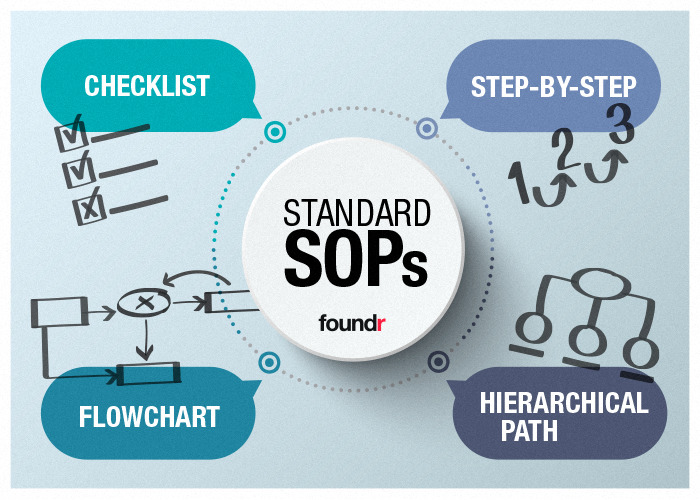
If you want to grow your power washing business beyond yourself, there’s one powerful tool you absolutely need: SOPs—Standard Operating Procedures.
Think of SOPs as the blueprint for how your business runs. They tell your team exactly what to do, when to do it, and how to do it—without needing to ask you every time. 🤯📋
Whether you’re offering house washing, roof cleaning, concrete cleaning, or deck restoration, well-written SOPs help you:
✅ Train new employees faster
✅ Ensure consistent service quality
✅ Reduce mistakes and callbacks
✅ Free up your time as the owner
✅ Scale the business with less stress
In this article, we’ll walk through how to create SOPs for your power washing services that are clear, effective, and easy for your team to follow. 🧠🧼
🧠 What Is an SOP?
An SOP is a step-by-step document that explains how to complete a specific task or process in your business.
For example:
- How to soft wash a house
- How to set up and tear down a wash rig
- How to apply chemical mixtures correctly
- How to conduct a customer walkthrough before and after service
Each SOP should be detailed enough that any trained employee can follow it without confusion. 💡
🔍 Why SOPs Are a Game Changer in Power Washing
Let’s face it—power washing is technical. Between different surfaces, PSI levels, detergents, and equipment setups, there’s a lot that can go wrong.
Without SOPs, each tech develops their own method, which leads to:
❌ Inconsistent results
❌ Damaged property
❌ Angry customers
❌ Expensive callbacks
❌ Poor online reviews
With SOPs, your entire team delivers services the same way every time—just like a franchise. That builds trust, efficiency, and profits. 📈💪
🧾 Step 1: List Out All Your Services
Start by writing down every service your business offers:
🧼 House Washing
🏠 Roof Cleaning
🧱 Concrete & Driveway Cleaning
🪵 Deck and Fence Cleaning
🚛 Fleet or Commercial Vehicle Washing
🏢 Commercial Building Washing
🧽 Gutter Cleaning
🪟 Window Washing (if applicable)
Each of these should have its own SOP. You don’t want your team using the same steps for a driveway that they use for a shingle roof. 🚫
✍️ Step 2: Break Down Each Service Into Steps
Let’s use “House Washing” as an example. Your SOP might include:
- Pre-Inspection
- Walk around property with client
- Note fragile areas (outlets, door seals, loose siding)
- Take before photos
- Setup
- Park vehicle and trailer safely
- Unroll hoses and attach to water source
- Check chemical tank levels and mix solution
- Application
- Wet surrounding vegetation
- Apply soft wash solution from bottom up
- Let dwell for 5–10 minutes
- Rinse
- Rinse from top down
- Inspect for missed spots
- Post-Cleaning Walkthrough
- Walk with customer
- Take after photos
- Collect payment or close invoice
Each step should be short, clear, and actionable. Use bullet points, not paragraphs. 📋🧽
🧰 Step 3: Include Equipment and Chemical Details
Your SOP should also include:
🧪 Specific chemical ratios (e.g., “Mix 3:1 SH to water for vinyl siding”)
🧼 Recommended nozzles and tips
⚙️ Equipment settings (e.g., “Use 250 PSI for stucco surfaces”)
🚫 Surfaces to avoid spraying directly
This helps new techs avoid expensive damage and ensures chemical use is consistent and safe. 🔬
Browse Amazon Here For Top Rated Power Washers And Accessories
📸 Step 4: Use Photos and Visuals
A picture is worth 1,000 words—especially when training someone new.
📸 Include real photos of:
- Proper nozzle positions
- Ideal chemical dwell times
- Correct ladder placement
- “Before and after” examples
🧑🏫 Even better: use short video clips saved in a team Google Drive or Dropbox folder. This turns your SOPs into a full-blown training manual. 📹
🗂️ Step 5: Organize SOPs for Easy Access
Create a digital SOP library your team can access from anywhere:
📂 Organize by service type
📱 Make it mobile-friendly (for job site reference)
🖨️ Print laminated copies for rigs if needed
🧠 Store in Google Drive, Notion, Dropbox, or a project management app like ClickUp or Trello
💡 Pro Tip: Give each SOP a version number and last updated date so you know what’s current.
👷 Step 6: Train Your Team on SOPs
SOPs are useless if no one reads them. Introduce each SOP during onboarding and training:
- Walk through it with the tech
- Demonstrate the steps live
- Quiz them or ask questions
- Let them practice under supervision
Reinforce SOPs during weekly team huddles or performance reviews. Make it part of your company culture: “This is how we do it here.” 🙌
🔁 Step 7: Review and Update Regularly
SOPs aren’t set in stone. As your methods improve or new equipment comes in, update your SOPs:
📅 Review quarterly
🧪 Test new chemicals or gear
👂 Gather tech feedback
📸 Replace outdated photos
Involve your crew in updates—they’re the ones in the field and often have the best insights. 👷♂️💬
✅ Bonus: Add a Checklist for Accountability
At the bottom of each SOP, include a quick checklist employees can use before marking the job as complete.
Example:
✅ Pre-walk completed
✅ Proper mix ratio used
✅ Dwell time observed
✅ Photos uploaded
✅ Post-walk done with client
This holds techs accountable without micromanaging. 📋📲
💬 Final Thoughts
Creating SOPs isn’t just about documentation—it’s about building a business that runs without chaos, confusion, or constant oversight.
With clear, easy-to-follow SOPs for every service you offer, your team knows what to do, your customers get consistent results, and your business becomes more scalable, sellable, and successful.
Because when you systematize your business, you free yourself from being the bottleneck—and you pave the way for real growth. 🧼📈⚙️
Browse Amazon Here For Top Rated Power Washers And Accessories






